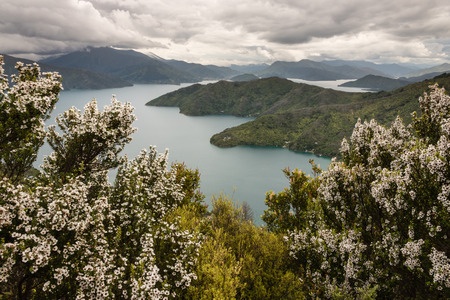NZ Scientist Says of Myrtle Rust: We’ve ‘Lost the Battle’
December 17, 2017
New Zealand, known as the birthplace of everyone’s favorite gourmet Manuka honey, may have possible "lost the battle" against a fungus called myrtle rust, according to a leading scientist, with the official who’s leading the country’s response saying New Zealand might have to face losing several vulnerable plant species. However, there is still hope of the Manuka bush, the source of the country’s $300 million honey industry, faring better than many first believed against the initial infestation of myrtle rust, which specifically attacks myrtle species of plants, including New Zealand natives like pohutukawa, kanuka, rata, and, of course, Manuka.
This fungus was first discovered on the island in a plant nursey back in May, and it’s been confirmed in over 100 different locations since then, including Te Puke, Taranaki, Northland, Wellington, and Auckland. The threat has been met with a significant biosecurity response, including 100 individuals in the field and millions in new studies. Despite winter having arrived for the U.S., New Zealand is heading into summer, which offers the perfect conditions for the myrtle rust to spread, making authorities’ response critical.
Fighting the Good Fight
However, Dr. Andrea Byrom, a scientist with Landcare Research, fears efforts were doomed from the start. "It doesn't mean we shouldn't be having as good a crack at it as we can, because it hasn't been detected in natural ecosystems yet, so there is still hope," says Byrom. "But the reality is, given where in the country it's been found so far, we may have lost that battle." Likewise, Catherine Duthie, who is the situation’s lead incident controller with the Ministry for Primary Industries, says the incursion has been progressing at an expected rate.
"We've had quite a lot of modelling done where we've looked at the plume of spores coming across from Australia, and Auckland and Wellington were the sorts of areas that were predicted to be hit," Duthie said. A 2011 government assessment warned that large areas in New Zealand could be hit, with some species possibly dying at a "landscape” level, which has happened within other countries. For example, Australia saw several plant species go extinct, including some with great significance to the Aboriginal people. "The worst-case scenario is we may lose some particularly vulnerable species like Bartlett's rata, particularly as they exist in the wild and because there's only a few individuals left," says Duthie.
Manuka’s Chances
Despite the dire predicted outcomes for some plant species, Manuka still retains a few positive signs. At this point, officials have searched over 8,500 Manuka plants but only found one that was infected. "The evidence from Australia indicates that Manuka is not the right tree to be susceptible, so we might get lucky on that one," Byrom said. However, she also stated that Manuka is a very plentiful species that is planted in the thousands over in Australia. "It's sort of like looking for a needle in a haystack and that's why surveillance is so important."
Copyright: pstedrak / 123RF Stock Photo


.jpg)




